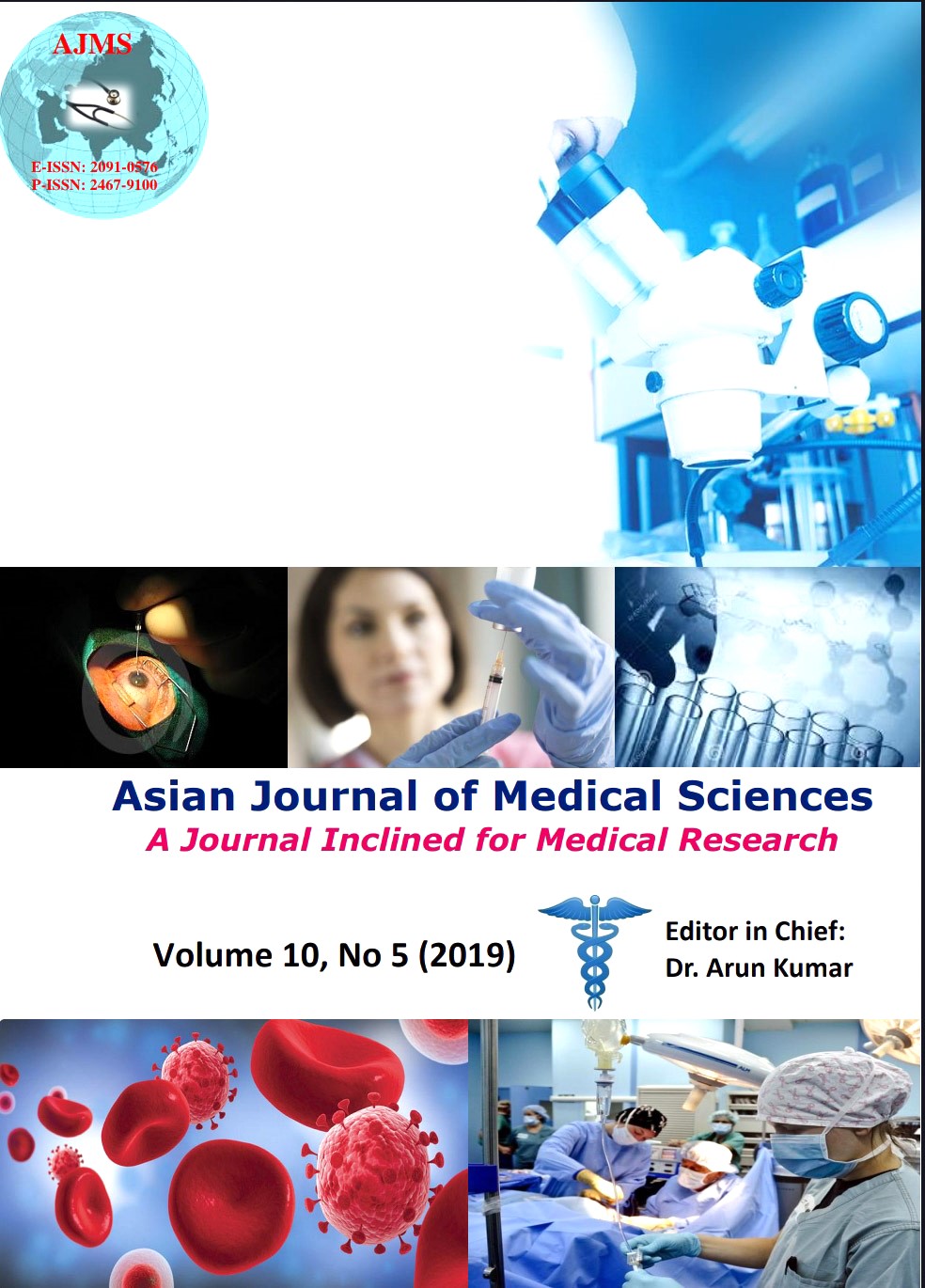Screening of hearing ability and hearing threshold among traffic police
Keywords:
Hearing Ability, Threshold, Traffic police, ScreeningAbstract
Introduction: Traffic police are continually exposed to loud noise. The pure tone audiometric screening for hearing test has not been done in Biratnagar Nepal. So, we conducted a study to screen hearing ability and also to find out hearing thresholds among traffic police with normal hearing ability.
Materials and methods: The study was conducted among 36 traffic police personnel. The 25dB sound was administered with audiometer (name) in different frequencies (1 kHz, 2 kHz, 3 kHz, 4 kHz and 8 kHz) for screening hearing loss in left and right ears. The threshold for hearing among normal hearing traffic personnel was compared with controls in all the frequencies.
Result: Among 36 traffic police, 17(47.2%) had hearing loss. Maximum (n=8) hearing loss was seen in 4 kHz (4 - unilateral and 4 – bilateral) followed by 3 kHz (n=4, 3 unilateral and 1 bilateral) and mixed 3kHz and 4 kHz frequencies. The percentage of hearing loss in 2 kHz, 3 kHz and 4 kHz frequencies was more in left ear compared to right. The threshold for hearing loss was higher in traffic police compared to controls .In the left ear, it was only in 4kHz {(25.91+6.64 Vs 20.45±4.15,( p=.034)} whereas in right ear, the threshold was higher in 3 kHz {20.45±5.22 Vs 15.91±4.90, (p=0.04)}, 4 kHz {25.45±12.54 Vs 16.82±5.60, (p=0.05)} and 8000 kHz {18.64±17.62 Vs 6.36±3.23, (p=0.04) .
Conclusion: The hearing loss was present in 47.2% of traffic policemen predominantly in 4 kHz. The threshold for hearing was also higher among traffic police compared to controls.
Downloads
Downloads
Published
How to Cite
Issue
Section
License
Authors who publish with this journal agree to the following terms:
- The journal holds copyright and publishes the work under a Creative Commons CC-BY-NC license that permits use, distribution and reprduction in any medium, provided the original work is properly cited and is not used for commercial purposes. The journal should be recognised as the original publisher of this work.
- Authors are able to enter into separate, additional contractual arrangements for the non-exclusive distribution of the journal's published version of the work (e.g., post it to an institutional repository or publish it in a book), with an acknowledgement of its initial publication in this journal.
- Authors are permitted and encouraged to post their work online (e.g., in institutional repositories or on their website) prior to and during the submission process, as it can lead to productive exchanges, as well as earlier and greater citation of published work (See The Effect of Open Access).




